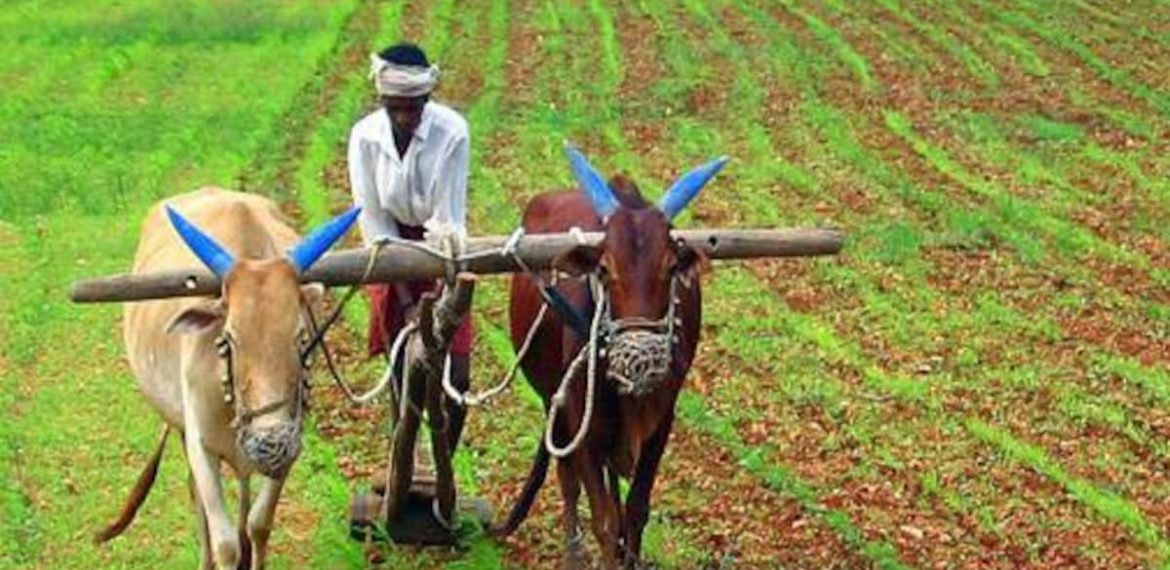The following is an article written by Farmer Leader Mr. Sharad Joshi and published on 1st September 2004 in the Hindu Business Online and later reproduced on the website of Shetkari Sanghathana. The article is part of the Down to Earth series which Mr. Sharad Joshi used to write for the Hindu Business Online. In this article, he highlights the evolution of Farmers’s movements in India, the formulation of the remunerative price theory and the many agitations which emphasised the need for freer markets for farmers.
At the end of a quarter century of struggle, the typical farmer is as badly indebted as he was at the beginning but stands vindicated and cleared of all charges of being indolent, ignorant and incompetent. Farmers agitations in the present epoch started over a quarter century back in Tamil Nadu, with Narayan Swamy Naidu’s bullock-cart blocking roads in protest against farm power tariff hikes and seeking their rollback.
Farm power is free now in Tamil Nadu, Andhra Pradesh and Maharashtra. But the farmers, crushed under the burden of debt, still commit suicides in large numbers. Indian agriculture continues to be a gamble in the monsoon and suffers from poor infrastructure. What has a quarter century of farmers’ movement to show by way of gains and what are the losses to the farm community? The movement concentrated on reduction of input costs for the first half-decade. It was only with the onion agitation in 1980 that it developed a comprehensive economic theory. “Remunerative prices for agricultural produce” came up as a single-point prescription for agriculture’s malady and general poverty. Remunerative prices were to be obtained through elimination of all governmental interventions in the commodity market.
Till such time as the State adopts the necessary level of liberalisation and economic reforms, it must ensure a minimum support price to make up for the price-depressing effects of its interventions: Restrictions on exports, domestic movement, processing, storage, etc., and non-commercial imports of farm commodities. General poverty arose out of the fact that the economy’s main activity, agriculture, was a losing proposition. This, in turn, was directly attributable to the government’s policies that depressed agricultural prices.
The formulation of the `remunerative price’ theory was straightforward and simple, and captivated the hearts of peasant masses that participated in large numbers in the farm agitations from Karnataka to Punjab and from Gujarat to Uttar Pradesh.
However, the economic pundits and the politicians protested vehemently. They cried:
- “Remunerative prices for agriculture are tantamount to subsidising the rural rich at the expense of the urban poor.”
- “Remunerative prices will benefit only the rural rich and not the landless poor.”
- “Agricultural losses are due to the long chain of intermediaries that needs to be eliminated so that, side-by-side with remunerative prices for farmers, the consumers will get the produce at reasonable prices.”
- “Free markets for agricultural commodities can produce shortages and food insecurity and, eventually, even starvation.”
The opposition of all the establishment economists notwithstanding, the farmers rallied in ever-larger numbers to the call of remunerative prices. The agitations produced immediate gains in the form of increase in support prices.
- The Chakan agitation (1980) got the onion farmers a support price of 60 paise a kg in the place of the mere 7 paise they were getting at that time. The constant reaction of onion producers to all attempts at restricting export of the commodity ensured aprice of Rs 3-5 a kg now.
- The tobacco Rasta Roko at Nipani (1981) was a terrible setback. The tobacco growers got little to show for the 13 dead in the SRP firing.
- The Maharashtra-wide blockade of milk (1982) was also a failure. The farmers could not stop the supply of milk beyond three days and the government remained stubborn.
- The sugarcane agitation centred in Nashik district (1980) succeeded in hiking the Statutory Minimum Price (SMP) of sugarcane from Rs 180 to Rs 300 per tonne.
- The agitation against the Maharashtra State Cotton Monopoly Procurement Scheme, which required the growers to sell their produce exclusively to the State dragged on for 18 years and ended by vanquishing the monopoly procurement scheme. The guaranteed price of cotton was Rs 700 per quintal in 1986. Now growers get around Rs 3,000 per quintal.
Apart from the concessions wrested by the thrust of farmers’ agitations, the demonstrated clout of farmers’ opinions and unity had its political consequences and the Minimum Support Prices (MSPs) continued to increase year after year. In the decade since 1990-91, the procurement price of wheat went up by 258 per cent, that of coarse cereals by 215 per cent, of arhar by 275 per cent, of cotton by 270 per cent; and the Statutory Minimum Price of sugarcane by more than 300 per cent.
The sheer strength of agitations and the political clout of the farm lobby were supplemented by yet another major development. The historic fall of the Soviet Union and the shift to the market paradigm ensured a successful culmination of the Uruguay Round GATT negotiations. The Agreement on Agriculture (AoA) of the World Trade Organisation (WTO) endowed a large number of benefits to farmers in India. First, there was a clear vindication of the fact that the farmers here suffered under heavy negative Aggregate Measurement of Support (AMS). Second, the abolition of Quantitative Restriction (QRs) took away all incentives for the political decision-makers and the bureaucracy to order imports in the nature of dumping.
In 1996-97, the quantum of negative AMS for 14 major crops in India was Rs 113,000 crore. Since 1998, the indications are that the AMS has actually turned positive. That does not mean the Indian agriculture is no more a losing proposition. The AMS is probably positive; that is, the prices in India are not lower than those prevailing in the international referral market. But it also does not mean that the prices are higher than the costs. Since 1995, the domestic costs have increased while the international prices have remained low. The gains of the farmers’ movement on the price front were too modest compared with the swelling costs and farmers continue to fall into debt, and death, traps.
However, the gains of this movement on the doctrinal front are spectacular:
- There is a universal acceptance that India has had a long regime of price-depressing policies that need to be reversed.
- There is a clear understanding there is little conflict between the interests of the landless labourers and those of the landholding farmers. The wage rates increase much faster than farm produce prices.
- There is also a realisation that the local chain of intermediaries is not the cause of the gap between the consumer and the producer prices. The India-Bharat syndrome is the more significant cause of the chasm and can be corrected by overall liberalisation and market reforms.
At the end of a quarter century of struggle, the typical farmer is as badly indebted as he was at the beginning but stands vindicated and cleared of all charges of being indolent, ignorant and incompetent.
[ The piece was originally published here.]


